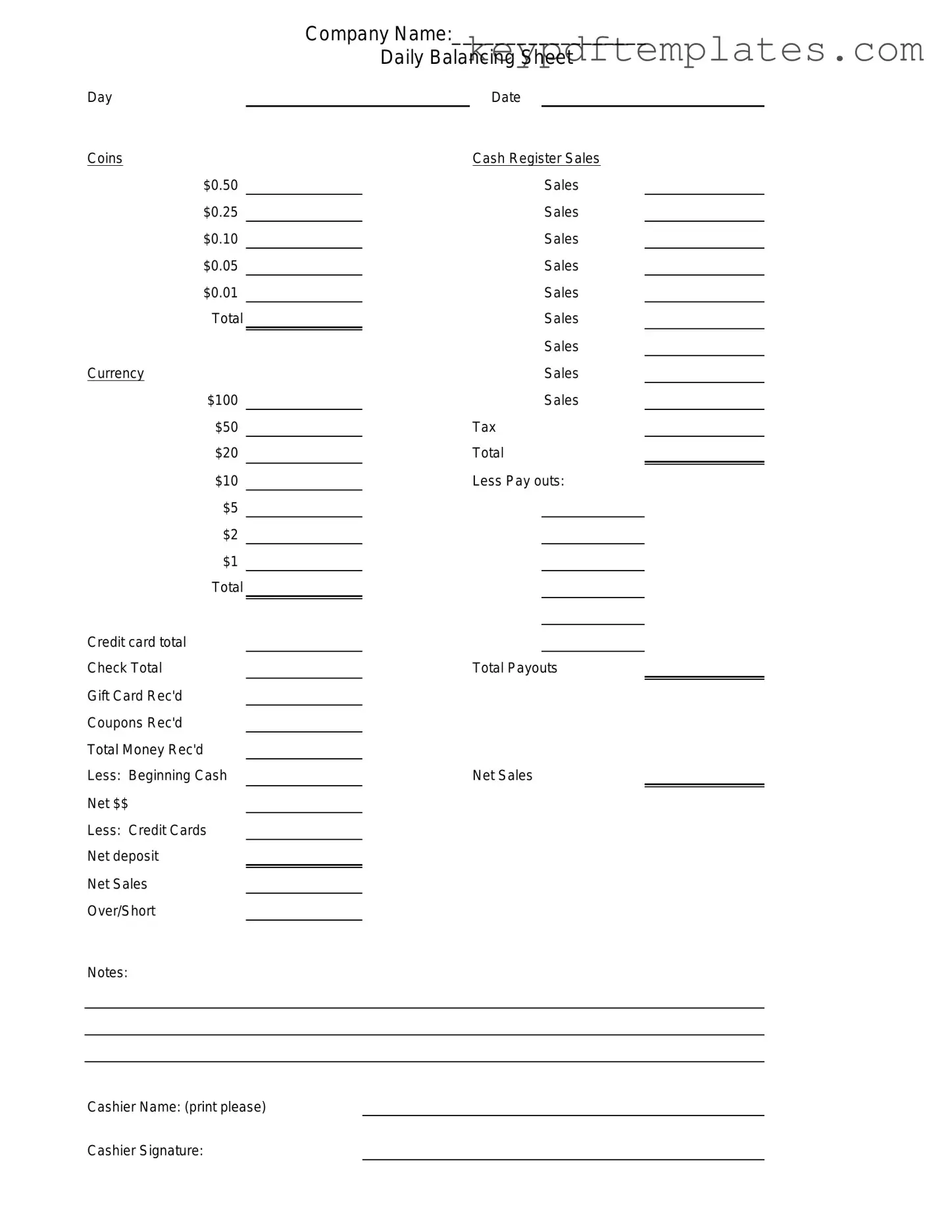Get Cash Drawer Count Sheet Form
The Cash Drawer Count Sheet is a financial document used by businesses to track the amount of cash in their registers at the end of a shift or business day. This form helps ensure accuracy in cash handling and provides a clear record for accounting purposes. By documenting cash counts, businesses can identify discrepancies and maintain financial integrity.
Modify Document Online
